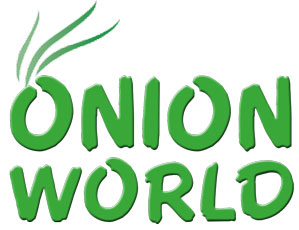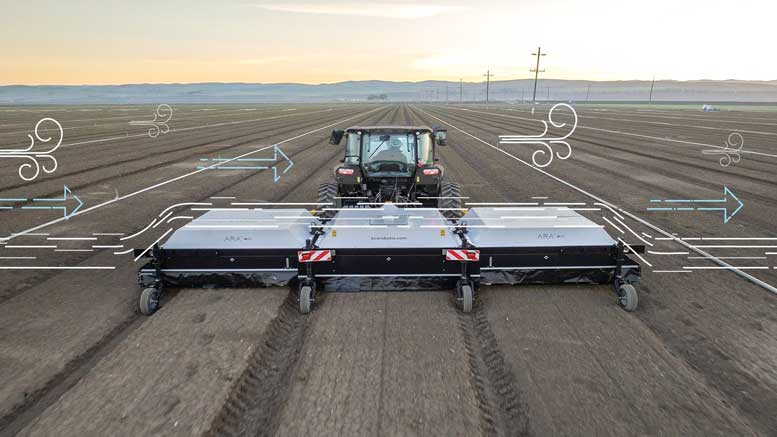|
Click to listen to this article
|
We have to admit, we’re a little obsessed with this AI-powered sprayer. As the agricultural labor pool shrinks, more farms will be incorporating this type of precision and even autonomous ag technology. With this in mind, we interviewed Jose Marchetti, the business development director for Ecorobotix, for more details about the company’s ARA sprayer.
Tell us what the ARA is and what it does.
ARA is an ultra-high precision spraying machine for vegetable crops, meadows and lawns. We started commercializing it five years ago in Europe. The company was founded in 2014, officially.
Though new to the U.S., there are close to 300 machines deployed in European countries through a dealer network and even some in Eastern European countries. Only 12-15 months ago, we started developing the Americas, both Canada and the U.S., with great success. And here we are now after those first 12-15 months with a team in place in the U.S., registered in the U.S. with offices and a warehouse in Pasco, Washington. We’re very excited because our first users are very happy. Some customers are already booking their second or more units for next year.
Let’s discuss the main benefits of the ARA. The first is labor reduction.
So the labor reduction comes with all the times that the farmer can go into the crop with treatments, with certain products and at certain stages where usually, normally, they are not able to do so. With this ability of doing spot spraying and being able to spray either the correct dosage to control the weeds or some other options that we open the doors to, they can really clean up the fields in a way that never happened before. So they are seeing reductions from 30 percent of manual labor.
What about yield? You’re claiming some yield increases, right?
Yes, the second big benefit that we bring to the fields is increasing yield with also the possibility to harvest earlier. And why this happens is because spot spraying is helping the crops to grow healthier and at the normal rate of growth. We know that some of the selective herbicides that we are using on the fields are harming the crops and are slowing down the rate of growth that they have. So by using the spot spray machine, it grows healthier at the right rate. Then you have higher yields and also a harvest that is happening one or two weeks earlier than when you use a broadcast sprayer. You are cutting down the effects of phytotoxicity on the crop that some of the selective herbicides are doing on onion fields. So this is a very big benefit. You know, agriculture is a business of marginal returns. So when you can get 3, 5 or 7 percent extra yield, the impact on the net margin is much higher.
So if I understand you correctly about that, with spot spraying, because of the ARA’s AI camera technology, you’re identifying weeds and the sprayer is turning on whatever nozzle it needs to just get that weed. So there’s no overspray that might be slowing down the growth of the onion plant where it has to recover a bit. And so without that recovery time, that’s where you’re getting extra yield?
Exactly – faster yields and better yields, but also earlier yields. We are running on the fields at 4.5 miles per hour at pretty decent and fast speed with a 20-foot machine with 156 nozzles, 1.5 inches from each other, opening and closing only when it’s necessary to spray the target that the farmer wants. So what we are doing is taking pictures of the field, identifying every plant, differentiating what is the crop, what is the weed. And depending on the treatment, we target either the crop for a fungicide or any crop protection treatment you want to do – even liquid fertilizer – or target only the weed to do weed control.
That segues nicely into the next benefit that I wanted to talk about, and that was lowering the cost of inputs, less inputs because now instead of spraying a larger area, you’re just spraying precisely.
Absolutely. In cases that you want to apply herbicides to kill weeds or if you are applying a fungicide to protect the crop from some disease, you are saving a lot of money. And depending on the stage of the crop and the weed infestation, those savings can be up to 95 percent. On average, when you use it in the whole cycle of the crop, it’s realistic to think that you are going to get around a 75 percent savings in all the inputs that you are applying on that field. It’s a very versatile machine.
We talked about yield increase and about big savings on inputs. So those heavy benefits together are really impacting the economics and giving us a return on investment that is very fast. It’s happening quick.
So I know you can’t specifically say how quickly because every operation is going to be different depending on acreage and what they’re spraying and whatever, but give us some examples.
We have different customers that are telling us with the savings that we have made plus the increasing yield, we are returning the money spent in one season. And, with only 200 to 300 acres of onions, you get the money back. You add, let’s say, 70 percent savings in phytosanitary products, a little increase in yield (it could be up to 15 percent extra), plus the reduction of manual labor. I’m sure the farmers are doing the math in their heads, and they understand better than anyone that those three benefits are adding a lot of money.
Editor’s note: This article is adapted from the Onion Podcast, edited for brevity and clarity. To listen to the entire interview, visit theonionpodcast.com.

